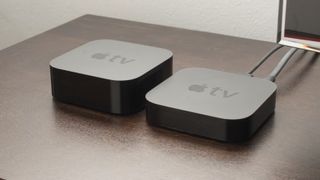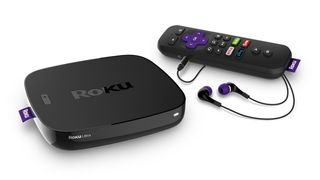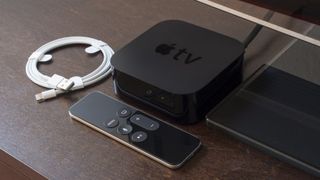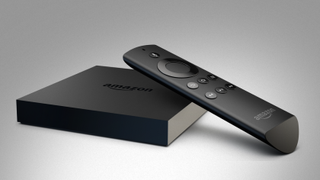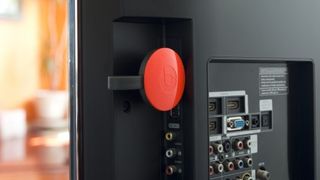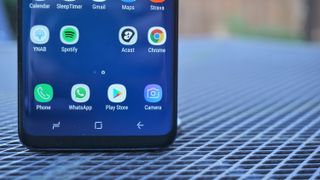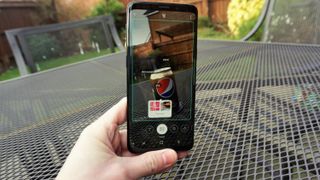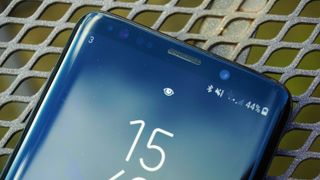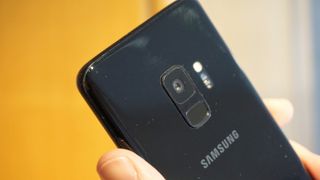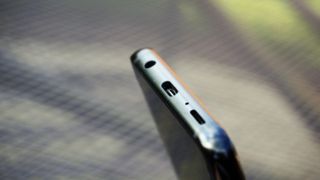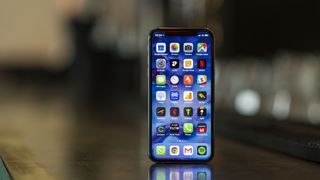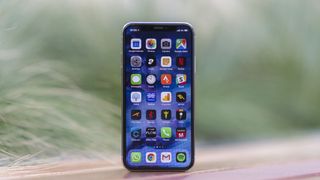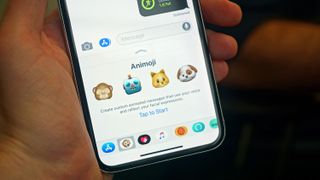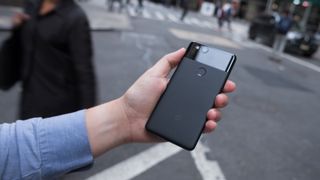
The Google Pixel 2 is the premier Android device that proves that two rear cameras aren't always better than one on a phone, especially if you favor photo quality over the latest all-screen designs. We have the picture proof below.
The Pixel 2, with its 5-inch screen, doesn’t look like the future of smartphones, except for its lack of a 3.5mm headphone jack. It doesn't have one, so you're going to want a pair of our best Bluetooth headphones for this one.
It doesn't look as slick as the simultaneously launched Google Pixel 2 XL, which has an edge-to-edge 6-inch display and tall 18:9 aspect ratio. The standard Pixel 2 is quite bezel-heavy. Of course, we now know it has more vibrant colors and no signs (yet) of screen burn-in problems like its larger counterpart. Pixel 2 may actually be a case of "better small than sorry
The bezels won't bother you if you want a phone that’s a great size, runs smart Google software and has a fantastic camera that will make your friends – even your Samsung-owning friends – jealous. Google's camera is only sometimes bested by the Samsung camera and the Huawei P20 and P20 Pro... but not always.
Plain and simple, the Pixel 2 is for people who favor functionality over fashion.
Update: Google Pixel 2 remains one of our favorite phone in 2018 – despite some technical issues of reliability at launch – for one reason: it has an amazing camera and starts at a normal smartphone price. And it has recently gotten even better thanks to Google awaking the Pixel Visual Core, the phone's co-processor dedicated to imaging, in the February software release.
It keeps getting better though, as Google has released the first developer preview of Android P. This one's just for developers and requires you to flash your device to get access, but future versions will allow any user to easily enroll.
Your only issue may be finding one in stock. Be sure to check out our hand-picked Google Pixel 2 deals to find the best value
Price and release date
- Starts at $649 / £629 / AU$1,079 for 64GB model
- Announced October 4, shipped Thursday, October 19
- In the US, try Verizon if the Google Store still has delays
It costs $649 / £629 / AU$1,079 for the 64GB version, and $749 / £729 / AU$1,229 for the 128GB configuration. In the US, this phone is sold on-contract through Verizon only among carriers, but worry not, ordering it from the Google Store will mean it works on all networks, including AT&T, T-Mobile and Sprint.
New Pixel 2 and Pixel 2 XL photo examples
The Pixel 2 and Pixel 2 XL have the same camera, and our very own Cameron Faulkner had both on his honeymoon to give us example of photos people take outside of a testing lab.Design
- Great size and likable design
- Squeeze the sides to launch Google Assistant
- Waterproof, but no 3.5mm headphone jack
It easily fits into one hand thanks to its palmable dimensions and light weight. A few years ago this would’ve been considered a phablet, but today, next to the Note 8, it’s a normal-sized Android phone. Most will be able to manage one-handed operation of its 5-inch screen, something that's literally a tall order with the 6-inch Pixel 2 XL.
Both new Pixel phones are now IP67 waterproof (meaning they can survive underwater up to 1m or 3.3ft down for an hour) and retain a glass-and-metal design on the back, albeit with less glass toward the top compared to their predecessors.
The fingerprint scanner has been moved – don’t worry, it’s not off-center, as on Samsung’s new phones – onto the textured aluminum portion of the back, while the camera remains on the glass part, and has a protective ring around it now.
You won’t find a headphone jack on this phone, nor even USB-C earbuds inside the box – it comes with just a simple 3.5mm-to-USB-C adapter. Google may have done some research and figured out that you probably own better headphones than the ones it usually supplies for free – plus, it’s all the more reason for you to buy into those Pixel Buds that just launched, righ

Music on this phone sounds great through headphones, and we even liked listening to music through the dual front-facing stereo speakers. Yes, there's an odd ticking noise coming from some Pixel 2 speakers, but Google promises a software fix for this issue.
Front-facing stereo speakers have become rare among smartphones, which too often fire onboard audio out of the bottom of the phone through a single speaker. Having them increases the size of the top and bottom bezel, but stereo speakers are part of the functionality-over-fashion trade-off we’re talking about.
The Pixel 2 also acquires a feature from the HTC U11 called EdgeSense. Squeezing the phone’s sides launches the Google Assistant, which in our experience has come in handy, and is way better than adding a dedicated AI button – Samsung uses such a button for its Bixby assistant, and we can’t stop accidentally pressing it on the Galaxy S8 and Note 8.
The LG G7 ThinQ uses for a button for Google Assistant, which at least leads to our favorite AI. But this squeezing function is better (and not as easy to accidentally press). Our only complaint is that Google won’t allow you to customize this squeezable feature to open up the camera or another app of your choice.
Screen
- Full HD 1080p screen is bright and colorful
- Thick bezels make it far from an all-screen phone
- Not the best choice for Google Daydream VR
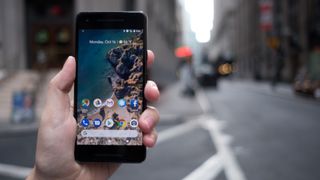
The display works okay with Google Daydream, but it’s less than ideal given the fact that you can see individual pixels at 1080p. The headset really calls for the Quad HD display from the Pixel 2 XL.
We did like the new always-on display, which shows the date, time and notification icons, and the overdue double-tap-to-wake-the-screen functionality. It’s now a lot easier to see what’s going on with your phone before you wake it up.
You just have to get beyond the bezels, and the fact that putting your Google Pixel 2 in a case makes the outline seem even more pronounced.
